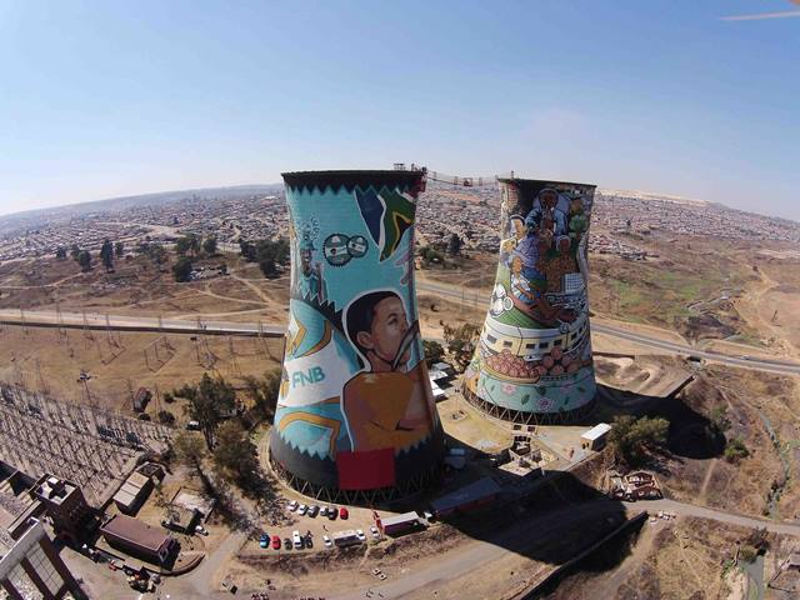Everything about Johannesburg North Attractions
Table of ContentsJohannesburg North Attractions Fundamentals ExplainedJohannesburg North Attractions Fundamentals ExplainedThe Definitive Guide to Johannesburg North AttractionsOur Johannesburg North Attractions DiariesFacts About Johannesburg North Attractions UncoveredIndicators on Johannesburg North Attractions You Need To Know
The city owes its area to the existence of a a lot more valuable source: gold. The city grew on the edge of the Witwatersrand Key Coral reef, a subterranean stratum of gold-bearing quartz-silica conglomerate that arcs for numerous miles below the Highveld. Most of the gold mines in the city ceased procedure in the 1970s, however in its day the Witwatersrand gold industry accounted for more than 40 percent of the world's annual gold manufacturing.Johannesburg has a pleasant climate. Summer temperature levels balance regarding 75 F (24 C); winter months temperatures average regarding 55 F (13 C) and just occasionally dip listed below cold. The city delights in concerning 8 hours of sunshine each day in both winter months and summer. Rain standards regarding 28 inches (700 millimetres) per annum, however the total differs substantially from year to year.
What rainfall the city obtains drops virtually specifically in the summer season, commonly in incredible late-afternoon electrical storms. Air contamination positions a considerable problem, especially in the cold weather, when thermal inversions impede the westward flow of air from the Indian Ocean. Pollution is most extreme in the largely resolved Black territories on the city's perimeter, where many residents still depend on coal for gas.

Fascination About Johannesburg North Attractions
The balance of the city is occupied by whites. Accommodation differs in personality and quality. Soweto is infamous for its unlimited rows of municipally constructed, two-room matchbox homes, yet it additionally has a couple of thriving territories in addition to bristling squatter camps, where 10s of thousands live without water, electrical energy, or hygiene facilities.
Physical development, although rather restricted by transport, continued quickly as immigration to South Africa, and Johannesburg in particular, enhanced significantly. This issue was resolved in the 1930s when the automobile was introduced in automation to South Africa. Autos were, generally, confined to the wealthy, and allowed them to transfer to the north of the city and commute into the centre.
Most poor residential areas were combined, with bad blacks and whites living together, although the wealthy residential areas were normally booked for whites.
The previous system of eleven phoned number regions was reorganised in 2006. Marshalltown, as seen from the top of the Carlton Centre. The M1 and M2 run behind the buildings, and the southerly suburbs prolong past the freeway boundary. The central city of Johannesburg is situated within the city's Region F. The approximated populace of the region is 200,000, [] but the number of people residing in the inner city on a casual basis is unknown, as numerous are prohibited immigrants. Many higher-income citizens and white individuals have relocated to the north residential areas and have been replaced by lower-income black people. The unemployment, education, and age profiles of the area are all unknown, because of the problem of getting trusted details concerning the area.
The Ultimate Guide To Johannesburg North Attractions
Centred on the CBD, the area includes the residential areas of Yeoville, Bellevue, Troyeville, Jeppestown, and Berea to the eastern. To the west it spreads out to Pageview (Johannesburg North attractions) and Fordsburg. There are little commercial areas to the south, such as City West-Denver and Benrose. Around 800,000 commuters pass with the central city each day, and it functions as a local buying node for visitors from the southerly suburbs. Yeoville and Bellevue have a mix of apartment and solitary property devices on tiny great deals. The region lies on a mountainous divide that runs from east to west. The most noticeable geographic attribute is Observatory Ridge, which is named for the big observatory located on it. The entertainment areas are no much longer used, as a result of safety and security issues.

Johannesburg North Attractions for Dummies
R. these details Tambo International Flight Terminal). The eastern residential areas are a few of the oldest locations of Johannesburg, there are big communities of Jewish and various other European histories, the bulk of the population is English speaking. There her latest blog are three fairway in addition to a variety of safeguarded ridges with viewsites. There are a number of well-developed and up-market home entertainment and buying areas in the eastern such as the Eastgate Buying Centre and the Greenstone mall.
Originally built to house male migrant employees, numerous have been improved as houses for pairs and families. The suburban area was not historically allowed to produce employment centres within the area, so nearly all of its homeowners are commuters to various other components of the city.
The 9-Minute Rule for Johannesburg North Attractions
The N1 Western Bypass attaches the north residential areas with the north-western suburbs. The property areas in the north suburban areas are mainly official, without any significant areas of casual housing, or housing that lacks a long-term structure. This is an established location, there is a pattern of land usage adjustment from property to industrial, particularly along main arterial roads and around recognized nodes.
Roads to the east and west are less well developed, as there are no freeways taking a trip in that direction. Towards the northern border of the city, the thickness of growth reduces, additional resources leaving large locations of undeveloped land around Midrand.
Johannesburg North Attractions Can Be Fun For Everyone
The first residential area to the north of the central city is Parktown, which is situated on a hillside ignoring the central city and Hillbrow. It has numerous well-off homeowners and Edwardian-design mansions, along with the Education and learning and Clinical schools of the University of the Witwatersrand. The huge concrete Charlotte Maxeke Johannesburg Academic Hospital dominates the skyline of Parktown.